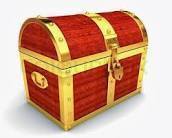South Africa

Here is the complete financial historical report of South Africa, in International English, as requested:
Financial Historical Report of South Africa
Basic Data
| Item | Information |
|---|---|
| Country ISO Code: | ZA |
| Official Language: | English (most widely used) |
| Language ISO Code: | en |
| Current Official Currency: | South African Rand |
| Currency ISO Code: | ZAR |
| Issuing Authority: | South African Reserve Bank (SARB) |
Currency History
Early Currency and Colonial Period
-
Prior to formal currency issuance, various foreign coins circulated in the region from 1652, including Dutch guilders, Spanish reales, Indian rupees, English guineas, Portuguese joannes, and Russian roubles.
-
British control of the Cape Colony began in 1806, introducing sterling coinage, which became the sole legal tender by 1826.
-
The Boer republics—the South African Republic (ZAR) and the Orange Free State—issued their own coins starting in 1874, including the notable “Burgers Pond” gold coins and later coins featuring President Paul Kruger (1892–1902).
-
Coin production ceased during the Second Anglo-Boer War (1899–1902), after which British authority was restored.
Union of South Africa and Pre-Rand Currency
-
The Union of South Africa was established in 1910, uniting British colonies and Boer republics.
-
From 1923, the Royal Mint in Pretoria produced coins identical to British sterling coins.
-
The South African pound, pegged to the British pound sterling, was the official currency until 1961.
Introduction of the Rand (1961)
-
The South African rand was introduced on 14 February 1961, replacing the South African pound at a rate of 2 rand = 1 pound (or 10 shillings = 1 rand).
-
The name “rand” comes from the Witwatersrand, the gold-rich ridge where Johannesburg is located.
-
Initial coins were issued in denominations of ½, 1, 2½, 5, 10, 20, and 50 cents. Initial banknotes included R1, R2, R10, and R20.
-
The government launched a public awareness campaign featuring “Decimal Dan,” a mascot to educate citizens about decimal currency.
Exchange Rate and Economic Context (1961–Present)
-
At introduction, 1 rand was worth approximately US$1.40.
-
The rand maintained parity or strength against the US dollar until the early 1970s.
-
From the 1980s, the rand depreciated due to high inflation, political instability, and international sanctions related to apartheid.
-
The rand lost parity with the dollar in 1982 and experienced significant volatility and depreciation in the following decades.
-
In 2001, the rand reached a historic low of R13.84 per US dollar.
-
Since the end of apartheid and political reforms, the rand has stabilized somewhat but remains a volatile emerging market currency.
Coins and Banknotes Evolution
-
Coins evolved from small cent denominations to larger coins including R2 and R5.
-
Production of 1- and 2-cent coins ceased but they remain legal tender.
-
Banknotes now include R10, R20, R50, R100, and R200 denominations.
-
Banknotes feature South Africa’s “Big Five” wildlife and prominent figures such as Nelson Mandela.
-
The South African Reserve Bank issues commemorative coins and special editions.
Currency Details
| Feature | Description |
|---|---|
| Currency Name (singular): | Rand |
| Currency Name (plural): | Rand |
| Currency ISO Code: | ZAR |
| Subdivision: | 1 rand = 100 cents |
| Subdivision Name (singular): | Cent |
| Subdivision Name (plural): | Cents |
| Date of Introduction: | 14 February 1961 |
| Issuing Authority: | South African Reserve Bank |
| Coins in Circulation: | 10c, 20c, 50c, R1, R2, R5 |
| Banknotes in Circulation: | R10, R20, R50, R100, R200 |
| Mint: | South African Mint Company (SAMC) |
Design and Symbolism
-
Early coins featured the South African coat of arms and national symbols.
-
Banknotes depict South African wildlife (Big Five: lion, leopard, elephant, buffalo, rhinoceros) and notable leaders such as Nelson Mandela.
-
The rand’s name reflects the country’s rich gold mining heritage.
Economic and Monetary Context
-
The rand’s history is closely linked to South Africa’s political and economic developments, including colonialism, apartheid, sanctions, and democratic transition.
-
Inflation, exchange controls, and sanctions heavily impacted the rand’s value in the 1980s and 1990s.
-
Since democratization, monetary policy has focused on inflation targeting and exchange rate management.
-
The rand is widely used in neighboring countries (Namibia, Lesotho, Eswatini) alongside their own currencies.
Curiosities and Commemoratives
-
The rand celebrated its 60th anniversary in 2021.
-
Commemorative coins have been issued for events such as Nelson Mandela’s centenary.
-
“Decimal Dan” was a unique campaign to educate the public on decimal currency.
Current Status
-
The rand remains the sole legal tender in South Africa.
-
Coins and banknotes are actively circulated and regularly updated with enhanced security features.
-
The South African Reserve Bank continues to regulate and issue currency.
 Nilton Romani
Nilton Romani
